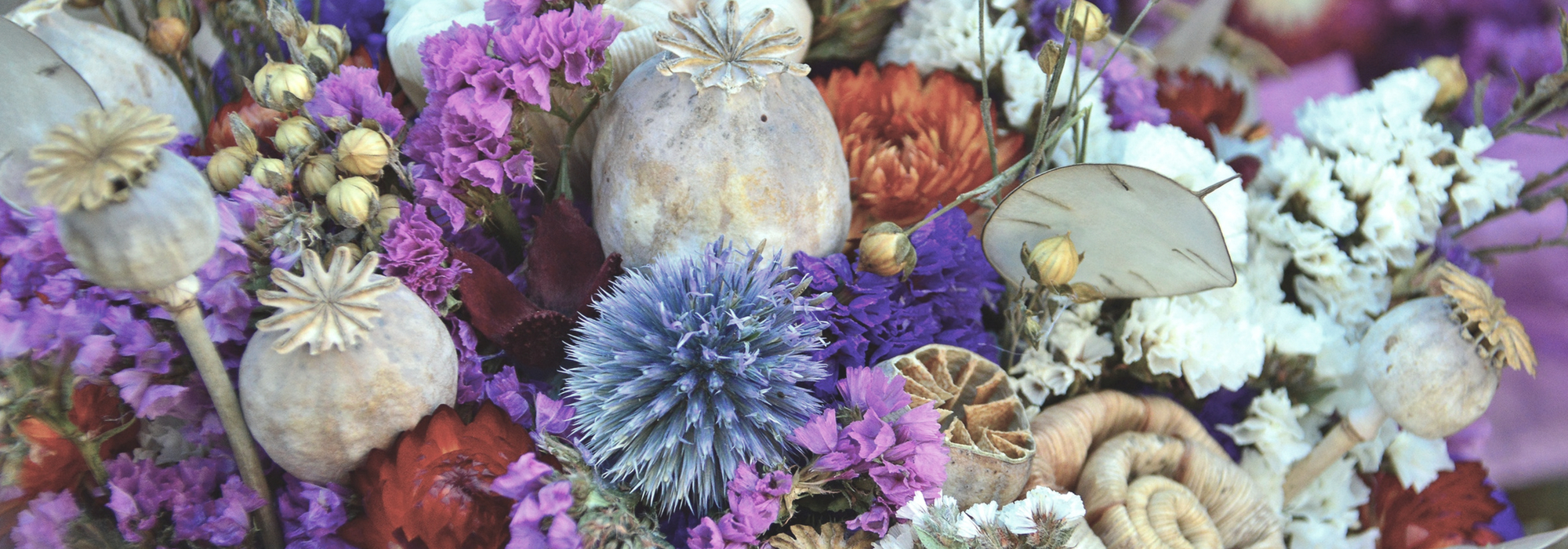
Dried flowers: which ones to choose, how to dry them and maintain your bouquets?
The best varieties and our tips
Contents
Long regarded as dreadful dust collectors, dried flowers are experiencing a true resurgence of interest. They are everywhere: in the home, as decor, where they come in minimalist versions or vintage charm compositions, as well as in the bohemian bouquets and crowns of the trendiest brides. Durable, almost eternal, dried flowers are definitely making a grand comeback. So, why not grow them in your garden and dry them yourself? It’s very easy! Here is a list of the best varieties along with our explanations and tips!
Which flowers to grow for drying
Almost all flowers can be dried, but to create beautiful, colourful bouquets that last a long time, it’s better to grow varieties that are particularly suited. Here is a selection of flowers, to be grown at home from seeds or young plants, that will yield the best results.
Everlastings
Bracted Everlastings (Xerochrysum or Helichrysum bracteatum) are among the most well-known. They are very floriferous and their colours are bright. It is the quintessential dried bouquet flower! A little less common, the Australian Everlasting or Acroclinium (Helipterum roseum) is also very interesting for the contrast between its black and yellow centre and its white or pink petals, which have a glossy paper-like texture. These are two easy-to-sow annual plants. The Silver Everlasting (Anaphalis margaritacea) is a perennial, equally easy to grow, and bears a cloud of small white-silver pom-poms, gathered in bouquets.
- Annuals or perennials – Flowering from July to September – To be grown in full sun even in dry soil
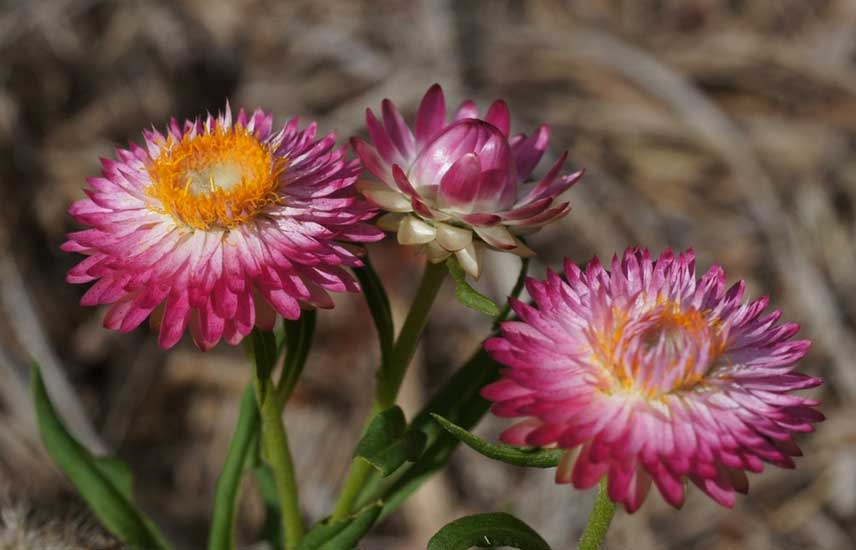
Lunaria
The Lunaria (Lunaria annua) is highly valued for its mauve or white flowering in spring but, above all, for its translucent disc-shaped fruits that catch the light with incredible grace. Very easy to dry, this beautiful biennial also has the advantage of self-seeding easily. In dried bouquets, it pairs well with almost everything and even benefits from being displayed alone, preferably in a vase with clean lines, for a minimalist effect.
- Biennial plant – Flowering in May – June, fruiting in September, October – To be grown in non-burning sun or partial shade, in rather cool and rich soil
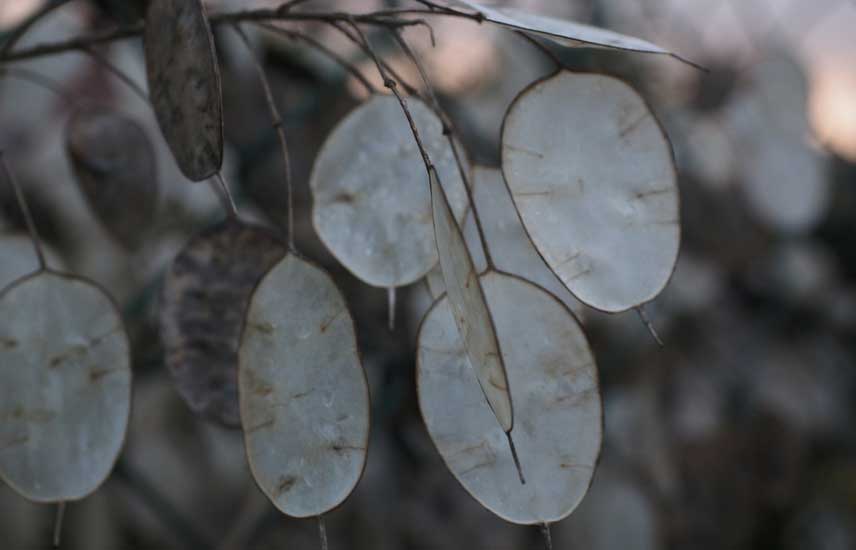
Statices or Limonium
Like Everlastings, statices are reliable choices. They provide tiny flowers all summer long that form lovely colourful clouds. Once dried, they retain their colours well. Statices can serve as a base for many bouquets, displaying bright or soft colours like the variety ‘QIS Apricot’, a very soft salmon pink.
- Not very hardy perennial (for statice sinuatum) grown as an annual – Flowering from July to September – Grown in full sun, in light and well-drained soil.
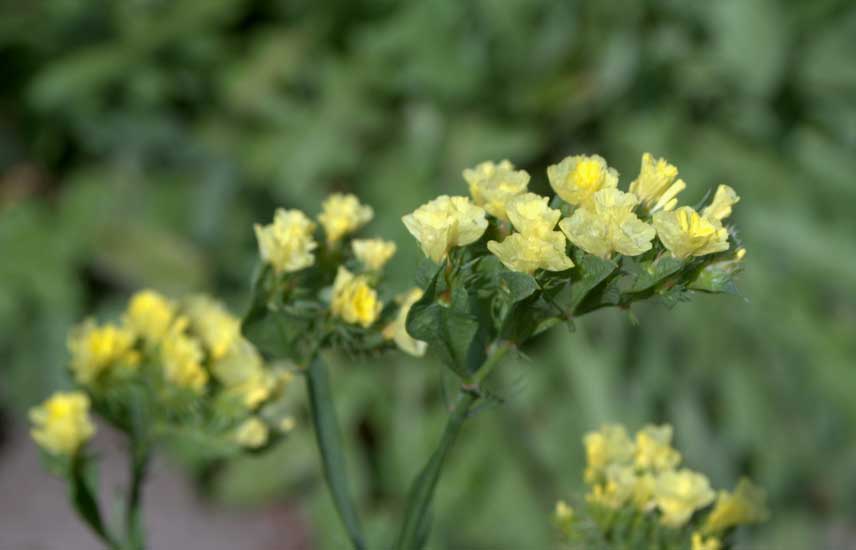
Gypsophila
Highly appreciated by florists, Gypsophila is also loved by dried flower enthusiasts. It forms a delicate mist as soft as a baby’s breath (it is indeed referred to as such across the Atlantic). Its cloud-like silhouette beautifully complements stiffer plants and highlights those selected for their decorative fruits.
- Perennial plant – Flowering from June to August – To be grown in full sun, in light soil, even calcareous.
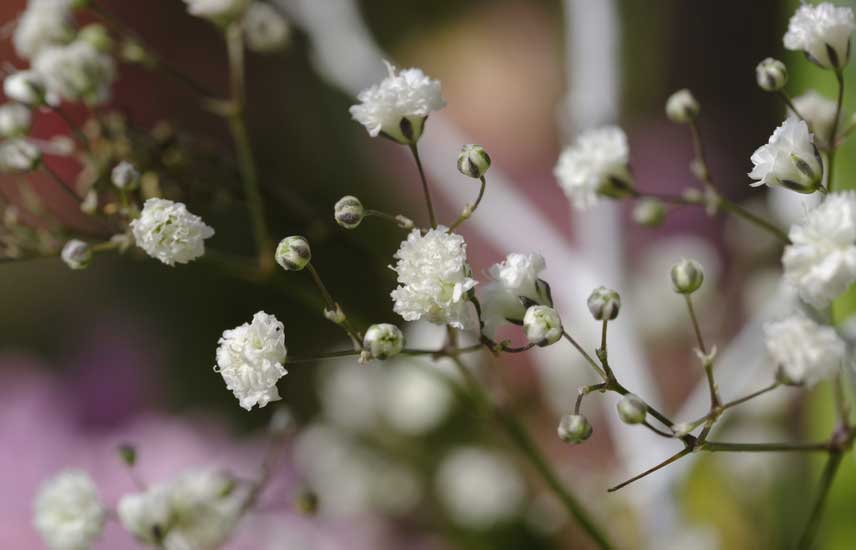
Thistles and Eryngiums
Their prickliness is sometimes feared, yet thistles, Eryngiums, and teasels are unmatched for adding structure to dried flower arrangements. The choice is vast, and we love both the graphic look of the Giant Eryngium ‘Willmotts Ghost’ and the charming blue balls of the Echinops ritro, known as “blue globe”. The teasel, Dipsacus sylvestris, evokes the countryside and the edges of paths, instantly giving a wild air to bouquets.
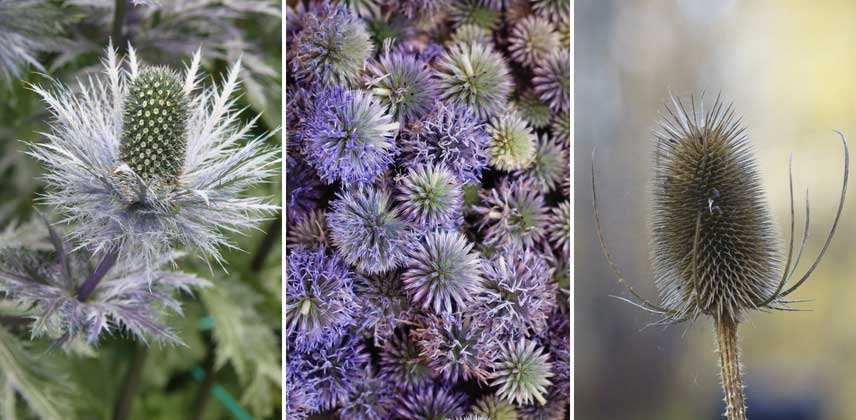
Eryngium giganteum ‘Miss Willmotts Ghost’ – Echinops ritro – Dipsacus sylvestris
- Perennial or biennial plants – Summer flowering – Easy to grow in full sun, in all soils
Poppies and Nigellas: ornamental capsules
The Opium Poppies (Papaver somniferum) and Love-in-a-Mist Nigellas (Nigella damascena) are beautiful annual plants that charm with their colours and the delicacy of their petals. In dried bouquets, it is their remarkable capsules that are sought after. More or less large, more or less glaucous in the poppy, they punctuate bouquets with great elegance.
- Annual plants that self-seed easily – Flowering in late spring – To be grown in full sun, in all soils
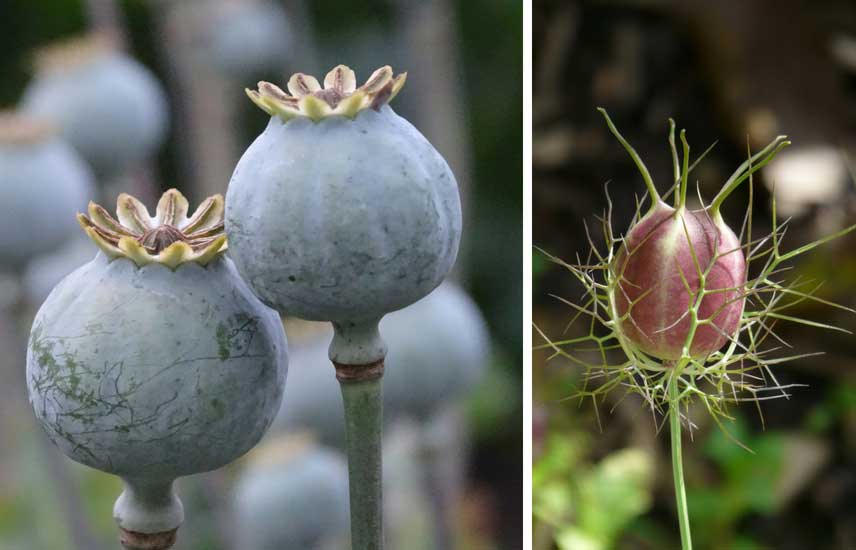 Poppy and Love-in-a-Mist capsules
Poppy and Love-in-a-Mist capsules
Chinese Lantern or Physalis alkekengi
The Physalis alkekengi or “Chinese Lantern” is an ornamental physalis that stands out from the edible species (P. peruviana) by its bright orange-red calyxes. Perennial and suckering, it is a somewhat exuberant plant that takes its space in the garden. In autumn, it offers beautiful fruits in the shape of Chinese lanterns, bright orange, that do not fade when dried.
- Suckering perennial plants – Summer flowering – Grown in full sun, in all soils
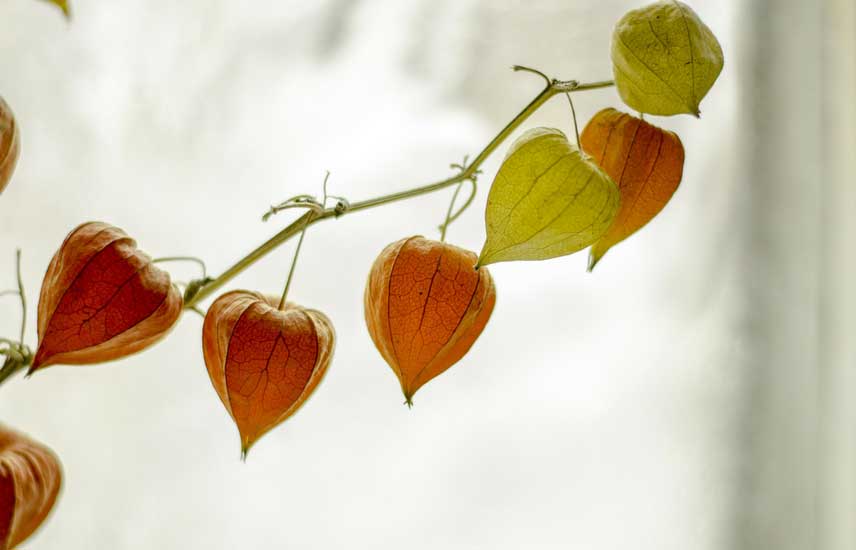
Grasses: Wheat, Briza maxima and Hare’s Tail
A symbol of prosperity, wheat is always welcome in bouquets. It is very easy to grow, and if you have chickens that you feed with grain, it may even be “spontaneous” in your garden! You can easily use it in large bouquets. In smaller arrangements, Amourette (Briza media and Briza maxima) will be perfect! And to add a little “cuddly” touch, feel free to include a few stems of Lagurus ovatus, these “Hare’s Tails” that grow spontaneously by the sea can easily be cultivated at home, in pots if needed.
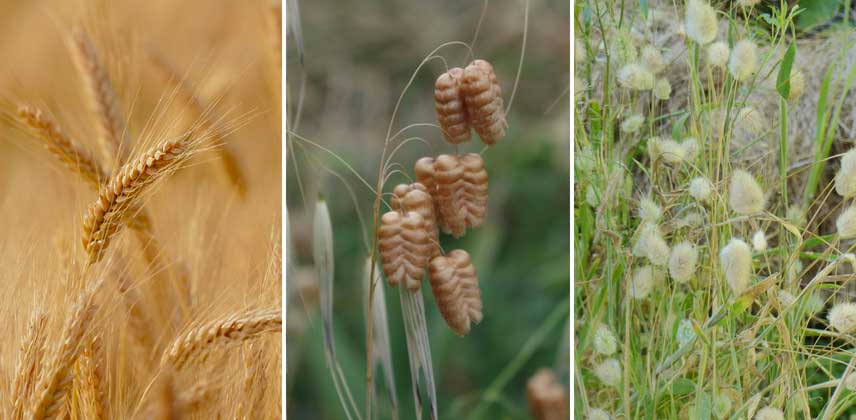 Wheat, Amourette (Briza maxima) and Hare’s Tail (Lagurus ovatus)
Wheat, Amourette (Briza maxima) and Hare’s Tail (Lagurus ovatus)
This list is, of course, not exhaustive. You will find a wide range of flower seeds for drying in our shop. Also, many perennial flowers that you may already have in your garden can be dried: roses, lavender, hydrangea flowers, yarrow, tansy, echinacea, delphiniums… Grasses like stipa, pennisetum, and miscanthus are also very suitable for dried bouquets. Don’t hesitate to experiment; it won’t cost you anything and will likely lead to some lovely discoveries!
Read also
How to dry hydrangea flowers? - TutorialHow to dry your flowers
The beautiful appearance and good preservation of dried flowers are mainly determined by the quality of the drying process.
To achieve beautiful dried flowers:
- pick them just before they fully bloom, at the end of a sunny day.
- Resist the temptation to put them in a vase: a flower that is even slightly wilted will never yield good results.
- Be selective: always choose the most beautiful flowers and, if necessary, remove any damaged parts.
You can choose between these two main techniques:
Air Drying
Drying flowers in the open air is the simplest technique. It should be done in a dry room (a room in the house, an attic, a garage, or a cellar as long as the environment is dry), preferably dark to prevent them from fading under light exposure, and well-ventilated. To do this:
- Set up a support like a clothesline if needed,
- Group your flowers into small bouquets of 5 to 10 flowers, not too tightly packed,
- Hang your flowers upside down,
- Wait (a few days to a few weeks) until your flowers are completely dry: you should feel them crack under your fingers.
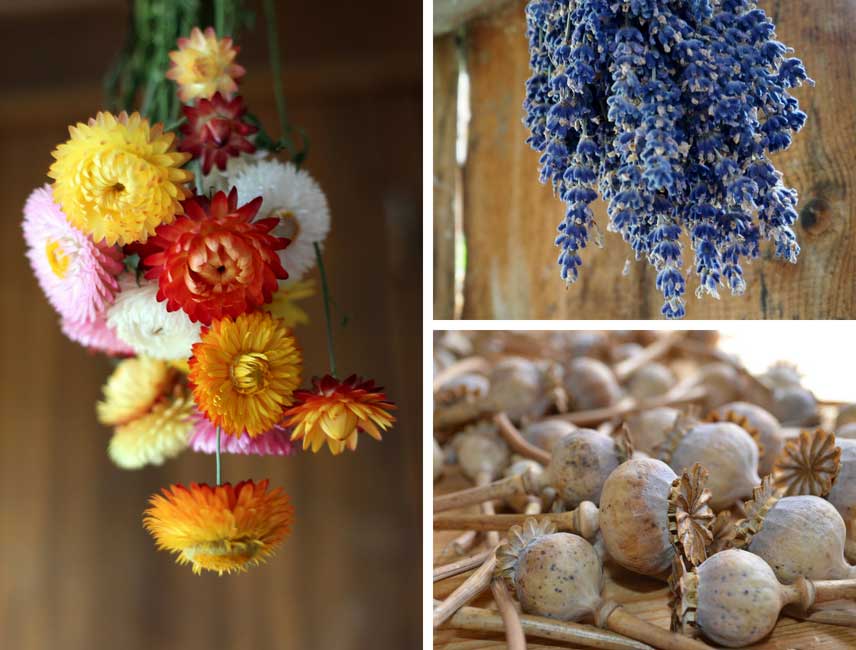
Air drying, a simple and natural method
Drying with Silica Gel
Drying with silica gel is a quicker technique but it only allows for small quantities of flowers to be dried. Silica gel is a dehydrating material that comes in the form of crystals or small beads. It can be easily found online and in craft stores.
This drying process is carried out as follows:
- prepare an airtight box, large enough to hold your flowers and capable of being closed,
- place a layer of silica gel crystals in the bottom of the box,
- lay the flowers to be dried on this layer,
- cover the flowers with another layer of silica gel,
- close the lid,
- Wait between 2 and 3 days, or even one or two more days until your flowers are perfectly dry,
- using gloves, remove the flowers and clear them of any silica residue.
This technique, more complicated than air drying, has the advantage of better preserving the original colours of the flowers. Feel free to use it for flowers with very dense and tight heads, which can easily rot even when air dried.
Note that microwave drying is a method sometimes suggested. It is a somewhat delicate and even risky operation that we do not recommend, as overheating can simply carbonise the flowers.
Discover other Perennials
View all →Available in 0 sizes
Available in 1 sizes
Available in 1 sizes
Available in 1 sizes
Available in 1 sizes
Available in 1 sizes
Available in 1 sizes
Available in 2 sizes
Available in 1 sizes
Available in 1 sizes
Caring for your dried flower bouquets
Once dried, we recommend that you store your flowers in paper bags, in a dry place sheltered from light.
Once gathered into bouquets or arrangements, your flowers are still sensitive to light: do not expose them to direct sunlight if you wish to preserve their lovely colour for a long time.
The reputation of dried flower bouquets as dust collectors is unfortunately not entirely unfounded. Once dust settles in, it is difficult to dislodge. To avoid this phenomenon, we advise you to regularly use a hairdryer set to a gentle, cool setting. Operate delicately and, if possible, hold your flowers upside down.
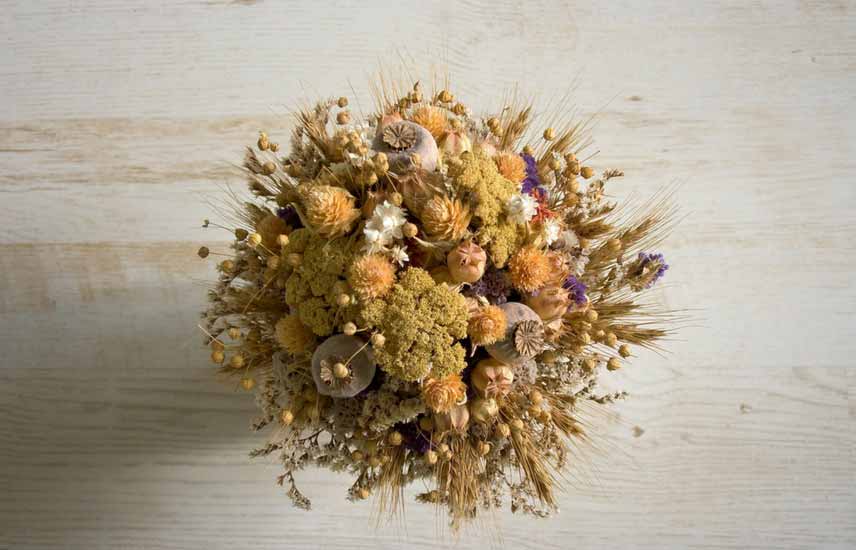
- Subscribe!
- Contents
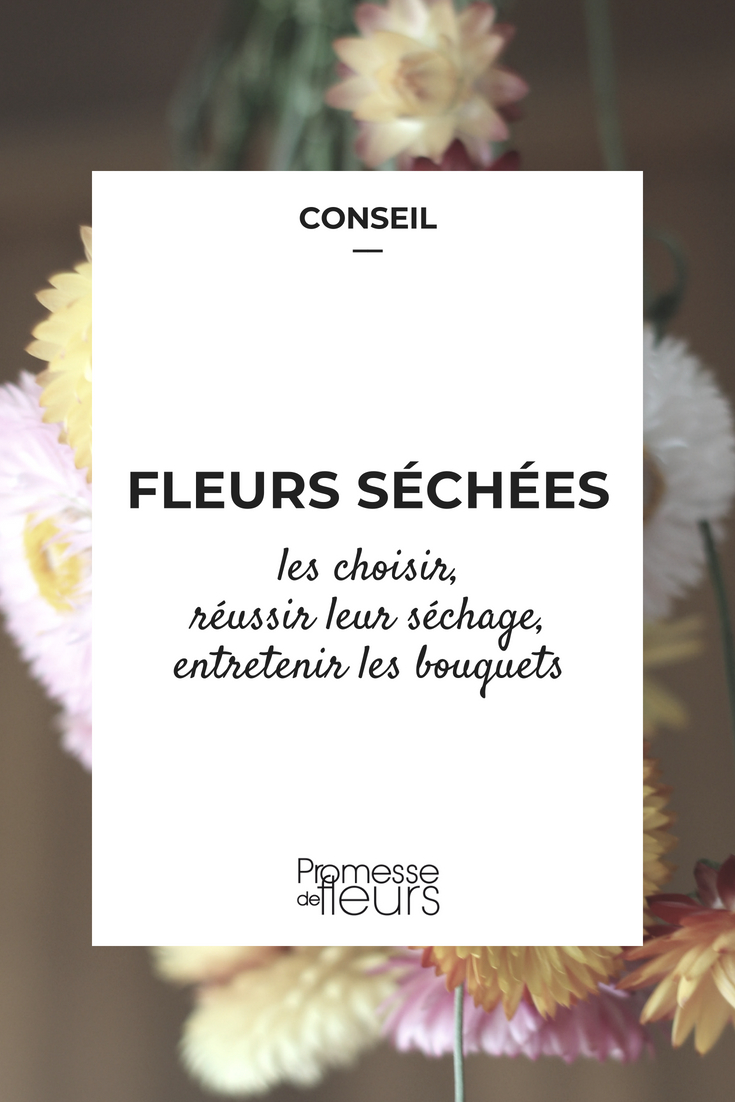
































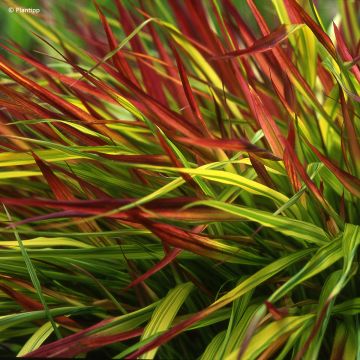
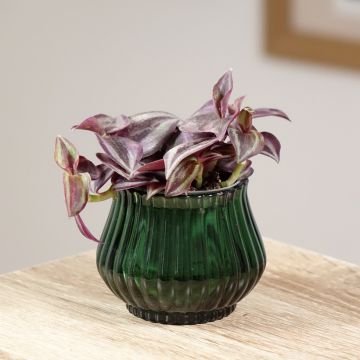
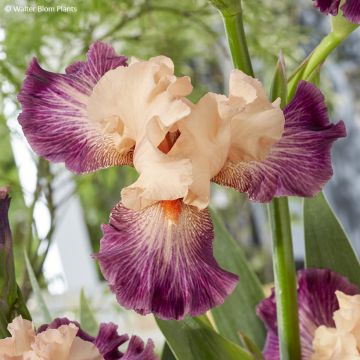
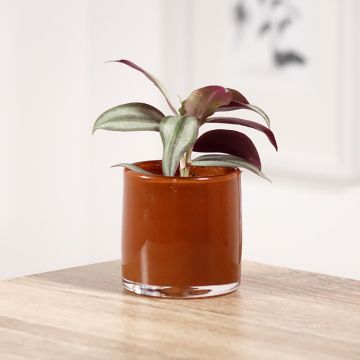
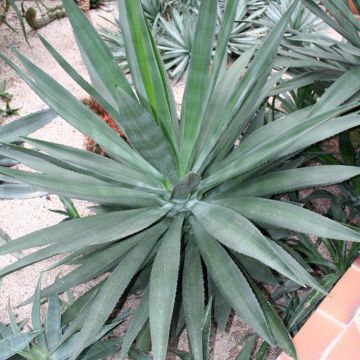
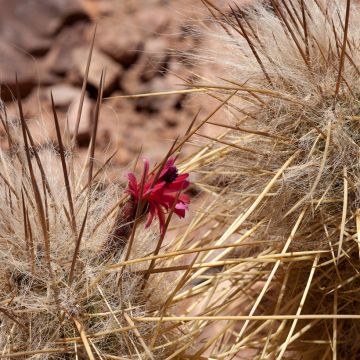
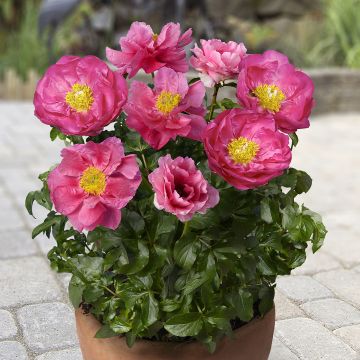
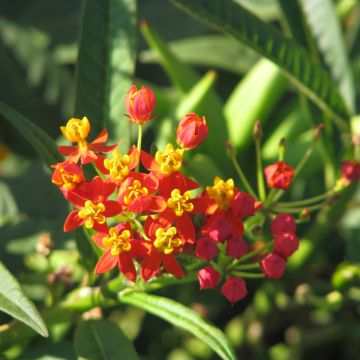
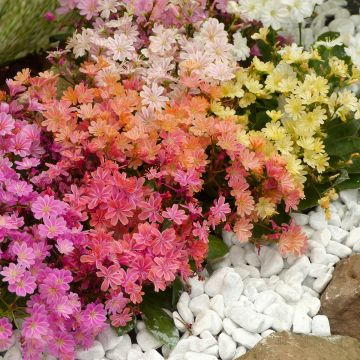
Comments